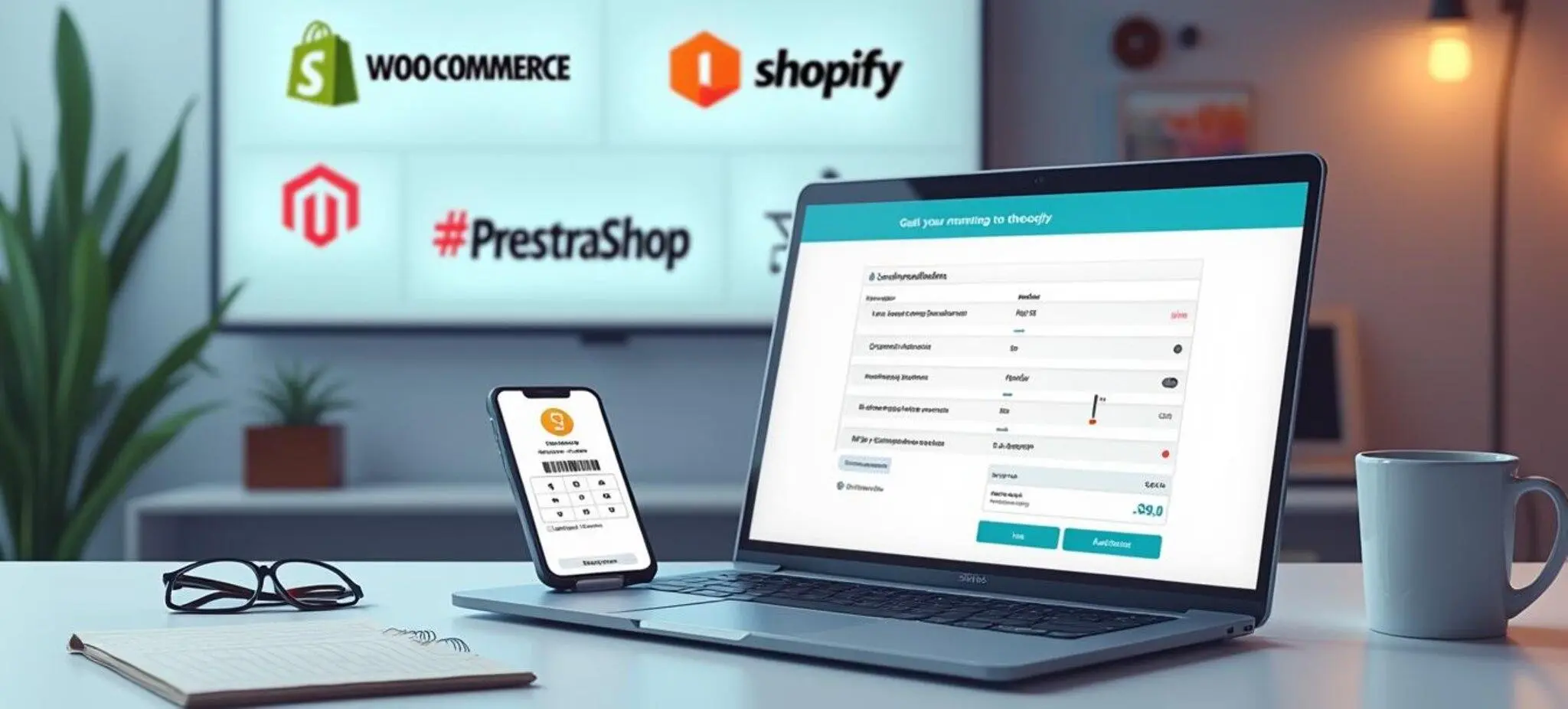Published: August 29, 2025 | Last updated: August 29, 2025
ROAS shows how much revenue you generate from ads. But does it really reflect how much you're earning? Not always. That’s why more and more e-commerce sellers are switching to POAS – a metric that looks not just at revenue, but more importantly, at profit.
In today’s e-commerce landscape, it’s getting harder to achieve sustainable profitability by simply increasing sales. Advertising costs are rising, margins are shrinking, and hidden costs (shipping, returns, commissions) significantly impact final financial results. If you're still basing your ad strategies solely on ROAS – you risk losing money, even if your campaigns appear "profitable."
In this article, we’ll show you the difference between ROAS and POAS, why evaluating the profitability of Google Ads campaigns requires a deeper approach, and how to transition step by step towards using POAS – a metric that offers a true picture of what you’re really earning. You’ll also learn how to optimize your ad budget, measure ad performance, and implement margin analysis in your e-commerce campaigns.
Start managing your ads with profit in mind, not just revenue.
Table of Contents
- ROAS vs POAS – What's the difference?
- Why is ROAS misleading?
- What is POAS and how is it calculated?
- How to implement POAS in Google Ads campaigns?
- Optimizing the advertising budget for profitability
- How to monitor and analyze POAS in daily work?
- Campaign profitability – frequently asked questions (FAQ)
- POAS vs ROAS: summary of differences and benefits
- POAS (Profit on Ad Spend) measures actual profit from campaigns, not just revenue.
- ROAS doesn’t account for margin, logistics costs, discounts, or commissions, which can distort results.
- Implementing POAS requires margin analysis and segmenting products by profitability.
- POAS enables efficient optimization of advertising budgets in e-commerce.
ROAS vs POAS – What's the difference?
ROAS (Return on Ad Spend) = revenue / ad cost
ROAS is one of the most commonly used metrics in online marketing. It shows how much revenue you’re generating for every dollar spent on advertising. Example: if you spend $1,000 on a Google Ads campaign and generate $5,000 in sales, your ROAS is 500%.
The problem? ROAS only measures sales performance, not whether you're actually making money.
POAS (Profit on Ad Spend) = profit / ad cost
POAS goes a step further. Instead of relying on revenue, it considers actual gross profit (revenue minus cost of goods sold). This metric gives a full picture of campaign profitability.
Example comparing ROAS and POAS:
- Product A: 1000 zł revenue, 5% margin, profit: 50 zł
- Product B: 1000 zł revenue, 80% margin, profit: 800 zł
- ROAS for both = 1000 zł / 250 zł = 400%
- POAS for A = 50 / 250 = 20%
- POAS for B = 800 / 250 = 320%
Conclusion: ROAS treats both sales as equally profitable, even though one brings 16 times more profit.
Why is ROAS misleading?
ROAS can be an inadequate metric, especially in a complex e-commerce environment. Here are the most common reasons:
1. ROAS doesn’t account for margin differences
Low-margin products require significantly more sales volume to match the profit of high-margin products. ROAS ignores this fact.
2. Google optimizes for average ROAS
By setting a target ROAS, you allow algorithms to mix products with very different margins. The result? A theoretically good campaign result, but with highly varied impact on profit.
3. ROAS ignores hidden costs
Example of costs not included in ROAS:
- Promotions and discounts (often 10–30%)
- Marketplace commissions (Allegro, Amazon – up to 15%)
- Free shipping and returns
- Customer service and warehousing costs
Even a great-looking ROAS could be hiding a campaign that is actually losing money.
What is POAS and how is it calculated?
POAS = gross profit from campaign / campaign cost
This metric focuses on what truly remains in the cash register after the campaign ends. Unlike ROAS, POAS requires an in-depth approach to margin and unit cost analysis.
Essential elements for calculating POAS:
- COGS (Cost of Goods Sold) – actual production/purchase cost
- Discounts and reductions offered to customers
- Sales platform commissions
- Costs of returns and complaints
- Logistics, packaging, customer service
Looking for easy payment processing? Check out payment solutions from Przelewy24
How to implement POAS in Google Ads campaigns?
Step 1: Perform a full margin analysis
If you don’t know the profit differences between products, you can’t manage the budget wisely. Divide your inventory into segments based on profitability (high / medium / low margin).
Step 2: Structure campaigns by margin
- High-margin products: bigger budgets, A/B testing, aggressive bidding
- Medium-margin products: balance – stable POAS with growing volume
- Low-margin products: an additional customer acquisition channel (cross-sell, up-sell)
Step 3: Build analytical dashboards and reports
Automate POAS data collection via marketing tool integrations (Google Ads + Google Analytics + ERP or e-commerce platform). Monitor actions daily.
Optimizing the advertising budget for profitability
The POAS metric allows for effective advertising budget optimization in e-commerce. Here’s how it works:
- Create allocation priorities based on campaign productivity (not just ROAS)
- Evaluate channels (Search, Shopping, Display) according to POAS – reallocate funds
- Set a "POAS threshold" acceptable for your business
- Observe trends and scale campaigns with increasing POAS
How to monitor and analyze POAS in daily work?
Best practices for managing POAS:
- Create dedicated reports by SKU / category / campaign
- Track POAS fluctuations over time – seasonality, changing buyer behaviors
- Aggregate data to account level and monitor average POAS
- Set separate POAS goals for promotional campaigns (e.g., accepting lower profits temporarily)
Warning signs to trigger action:
- POAS lower than 100% – the campaign may be unprofitable
- Sudden drops in POAS with increased spend – poor scaling
- Discrepancy between ROAS and POAS → indicates hidden costs
- Dependence on a narrow product range – high operational risk
Campaign profitability – frequently asked questions (FAQ)
1. What is POAS in e-commerce?
POAS (Profit on Ad Spend) is a metric that shows how much gross profit you earned from each dollar spent on advertising, not just the revenue like ROAS does.
2. Why is POAS better than ROAS?
Because it includes the actual costs of products, discounts, and additional fees, allowing you to accurately assess whether a campaign is profitable rather than just generating revenue.
3. How do you measure POAS in Google Ads?
You need to combine ad cost data with gross profit information for specific products. You can use tools like Google Data Studio, Looker Studio, or integrations with ERP/e-commerce platforms.
4. When should you use ROAS instead of POAS?
ROAS works well as a quick indicator of ad effectiveness, especially in test campaigns or upper-funnel efforts (e.g., brand awareness). For profitability analysis, POAS is essential.
5. Is it worth automating POAS analysis?
Absolutely. Especially in larger stores, automating POAS analytics eliminates errors, saves time, and allows for immediate response to changes.
POAS vs ROAS: summary of differences and benefits
ROAS can be helpful as a metric, but only POAS gives a true reflection of a campaign’s effectiveness from a profitability perspective. For e-commerce, this means making informed decisions, managing budgets better, and increasing real profits.
- ROAS = good performance metric, but can be misleading
- POAS = the key to ad campaign profitability in Google Ads
- Margin analysis, budget optimization, and ongoing analytics – the foundations of successful scaling
Start implementing POAS analysis today. It’s not just a technical shift – it’s a whole new way of thinking about growing your e-commerce business.
Convenient payment methods for your customers are an opportunity to grow your business.
Sources
- https://support.google.com/google-ads/
- https://www.shopify.com/blog/poas
- https://nowymarketing.pl/
- https://thinkwithgoogle.com/intl/pl-pl/



